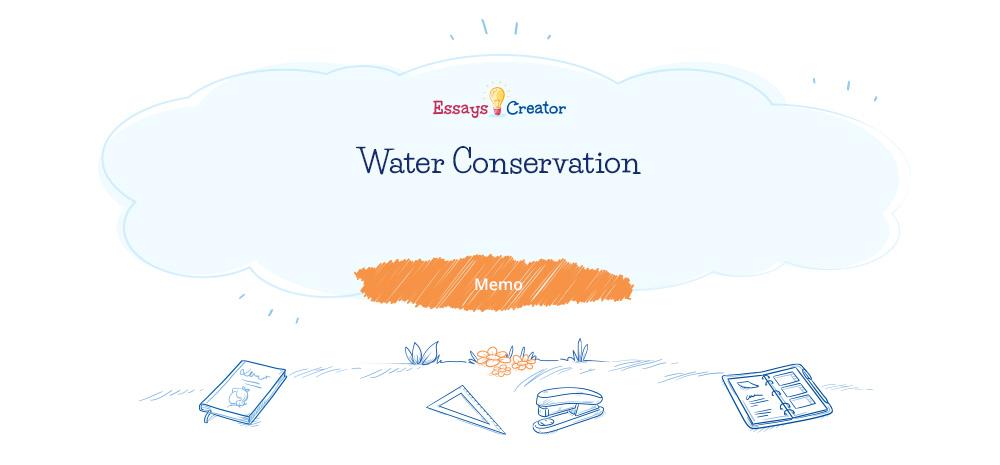
Memo
Water is life and a necessity for human survival. As such, it calls for prevention from pollutants and contaminants. There are several ways human beings use water. These include activities such as firming through irrigation, recreational facility, domestic use, and industrial use (Sturman, & Mathew, 2004). This water usage in several ways turns out to result in larger quantities of water being wasted or being used beyond the required amount. Therefore, there is a need for its sustainability. This memo is thus intended to address various ways through which individuals can conserve water both inside and outside their house.
Discussion
Plumbing is an engineered practice that involves the installation of indoor plumbing fixtures to residential water users to save water usage or at least reduce the quantity that is normally required for a given task through equipment that uses less water. These could be the installation of low-flow plumbing fixtures and retrofits that are in most instances permanent or at least use one-time conservation modes that are automatic, less costly, and would require little or no additional cost while in the long run remaining cost-effective (Sturman, & Mathew, 2004).
Order your Memo Papers today!
Low –Flow showerheads and faucet aerators.
Shower use accounts for nearly 20% of the water that is used for indoor purposes. Installing a standard 2.5-gallon-per head shower instead of a 4.5 gallon per minute head save 2 gallons per head that are equivalent to having saved $5.Thus a family of 4 is capable of saving 20 gallons of water per year. Unfortunately, individuals have a preference that dictates their optimal shower flow rate. However, the low-flow showerheads have been designed to offer quality services that correlate to those in higher–volume models.
Check pipes and faucets for leaks.
There is a need for an individual to continuously monitor and detect any form of leakage that could be resulting from the pipes and faucets. Small water drips through worn-out faucets at the end of the day could result in wastage of nearly 2o gallons a day while pipe leaks could result in wastage of more than a hundred gallons.
Toilet displacement devices.
Use displacement devices such as filled bottles and float boosters to displace some volume of water in the toilet tank to ensure that a small volume of water is used per flush. Such a simple technique of volume displacement results in a total save of 1to 2 gallons of water per flush.
Deep soak the lawns
Deep soaking ensures that water runs deep and much of it is absorbed for the intended purpose for once. Light showers to the lawns easily and evaporates quickly leading to water wastage since more will be required over a short duration (Green, 2010).
Do not water the gutters
Ensure the sprinklers are directed to the lawns and the gardens to avoid water waste on the gutters. Only water the lawns when it is called for and avoid watering the lawns and gardens in windy times (Green, 2010).
Application of organic matter
Using organic matter ensures that much water is absorbed as much as possible and is later released to the flower beds or lawns after the retention time elapses. The areas that have been plated already could be the best top dressed through the applications of compost manures (Green, 2010).
Recommendations
There should be government initiatives to educate people on the benefits of conserving water. The department of environmental water quality together with the citizens should work together to ensure that water is protected and conserved. The government should do away with flat-rate payment of water in some states and let every individual be accountable for the amount of water used. Citizens are always incentivized of prices (Seneviratne, 2007).

